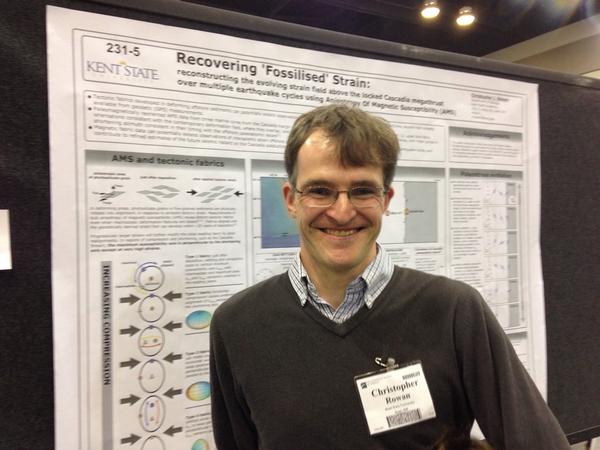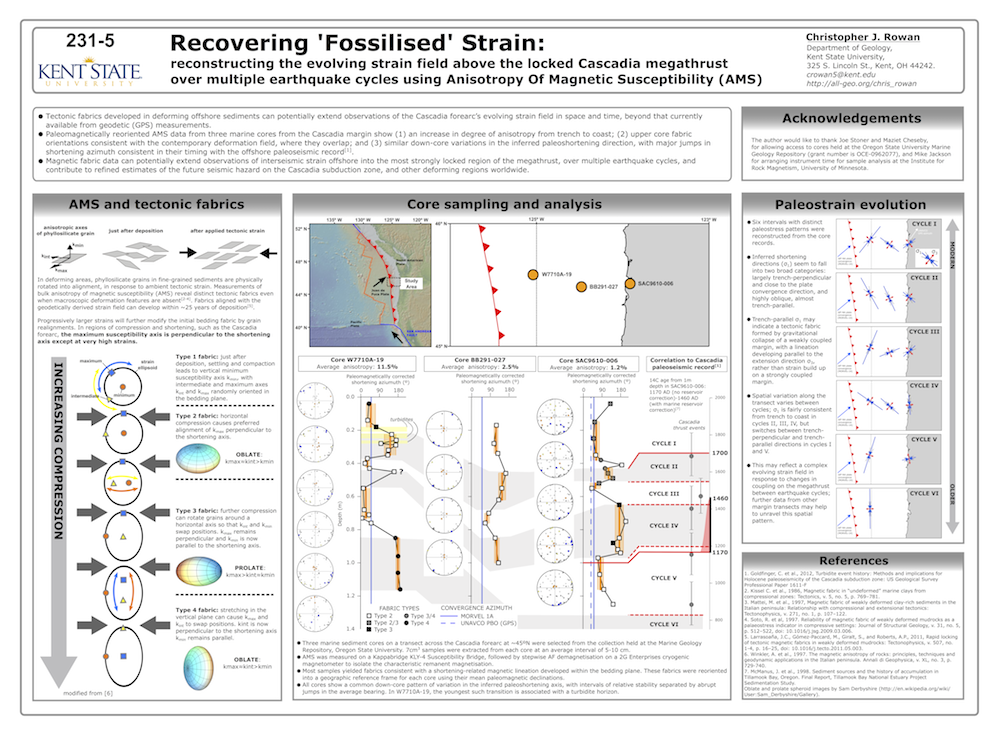New research on deformation in the Cascadia forearc presented at GSA in Vancouver
Categories Presentations
Last week, I was in Vancouver for the annual meeting of the Geological Society of America. There, I presented the first results of my research into the record of deformation on the Cascadia margin preserved in marine sediment cores. It has long been known that in deforming regions, fine-grained sedimentary rocks often preserve a record of the ambient strain field they formed in. Even very slight deformation causes phyllosilicate grains to rotate into a preferred alignment within the bedding plane, which registers as a slight difference in the magnetic susceptibility measured along different sample axis (referred to as the Anisotropy of Magnetic Susceptibility, or AMS). More recently, it has been shown that these tectonic fabrics can form extremely rapidly, within 25 years or so of sediment deposition. This makes them a potential source of information on the contemporary strain field in places like the Cascadia margin, where the most strongly locked region of the subduction thrust – which last ruptured in an estimated M9 earthquake in 1700 – are offshore, beyond the current reach of GPS.

My poster (click on the thumbnail above for a full size pdf version) presents AMS data from three cores subsampled at the Oregon State University Marine Geology Repository. These data show that not only do rapidly formed magnetic fabrics in the top of the cores appear to preserve information on current deformation of the forearc, but also that these fabrics become ‘locked in’ by sediment decompaction rapidly enough to record variations in the strain field within and between different earthquake cycles. This information can greatly expand our knowledge of subduction megathrust behaviour both in space and in time.
But caveat lector… one of the main reasons for attending scientific conferences like GSA is to see what’s new at the cutting edge of your field. This can – and often does – cast the questions you are working on in a new light; a potential problem when said illumination is provided after your poster has been printed! This is a long-winded way of saying that my interpretation of where the earthquakes were occurring in these records is almost certainly wrong. Wrong in possibly a very exciting way (rather unexpectedly, it seems these records may have sufficient time resolution to pick up visco-elastic relaxation in the aftermath of a large rupture) but wrong nonetheless. I’ll be working to smooth out these wrinkles in the next few months.
